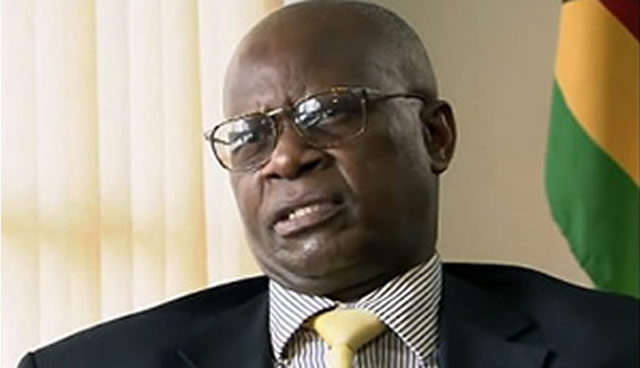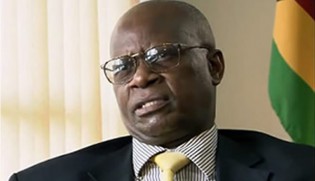Yes, you can if you want!

Lloyd Gumbo Mr Speaker, Sir
It’S official, the proposed 2014 National Budget is predominantly to do with about two percent of our population, if submissions by various ministries to Parliamentary Portfolio and Thematic Committees this week are anything to go-by, notwithstanding Finance Minister Patrick Chinamasa’s statement that just 70 percent of the country’s revenue would go to employment costs.
Submissions to Portfolio Committees this week by various ministries have revealed that most of the budgetary allocations were going to salaries of about 220 000 Government employees.
In essence, one can safely say the proposed 2014 National Budget is more to do with civil servants than the rest of the population. It shows that Government is employing civil servants to pay them 100 percent salaries in return for between four to 30 percent of required work.
Treasury, as has become the norm, asked all ministries to submit their budgetary requirements for the 2014 financial year so that the exchequer would be informed of the priorities that needed funding in all the ministries.
Ministries submitted what they believed would see them successfully executing their mandate and ensure that the Zimbabwe Agenda for Sustainable Socio-Economic Transformation achieved what it was set out to achieve. But regrettably, what did they get? They were allocated salaries while social amenities, capital and other priority projects accounted for less than 30 percent, at least according to submissions by ministries and stakeholders who gave feedback on the allocations to Parliamentary Portfolio and Thematic committees as enshrined in the law.
The review is meant to give an opportunity to parliamentarians to have an appreciation of what ministries need in terms of monetary support for the year against what they are allocated by Treasury. After that, legislators then make submissions in Parliament proposing variations in line with the feedback they receive from the ministries that they shadow.
It is at that stage that the Finance Minister can consider the recommendations depending on what would be in the purse. We are under no illusion that, over the years, submissions from portfolio and thematic committees rarely influenced allocations at the post-budget analysis stage because it’s generally believed that Treasury would have acted reasonably by allocating those funds to ministries based on projected revenue collections.
Immediate past Finance Minister Tendai Biti during his tenure would sometimes lose his patience and spit vulgar words when pressured to allocate more resources to ministries.
He would go to the extent of asking legislators if they expected him to squat on a basket and “lay” money. Obviously given what he termed a “small cake”, some people understood his frustrations because they knew revenue sources could not extend like rubber bands.
But honestly, that is no excuse for getting priorities all wrong. Given that background, Minister Chinamasa faced a daunting task of ensuring that everyone saw light at the end of the tunnel following a resounding victory by the revolutionary party at the July 31 harmonised elections.
Zim-Asset is one document that appeared at the right time in terms of taking the economy forward especially around the four clusters that it hinges on — food security and nutrition, social services and poverty reduction, infrastructure and utilities, and value addition and beneficiation.
Everyone had hope in this Government whether they liked it or not, but the proposed national expenditure estimates must have dampened their spirits.
It would be naivety to believe that Treasury must have approved all the submitted bids by ministries given what’s in the basket. However, Treasury cannot be exonerated for the meagre allocations to some critical ministries that are supposed to be the launch pads for economic revival as identified by Zim-Asset.
Why do we seem to be speaking with forked tongues when it comes to economic revival? The ministries of Mines and Mining Development and Agriculture, Mechanisation and Irrigation Development are supposed to be the key drivers of Zim-Asset yet they were allocated fewer resources than those that do not generate revenue.
The mines ministry was allocated US$8,6 million most of which would go to salaries despite requesting US$28, 79 for operations. This is despite the fact that in the US$4, 1 billion proposed national budget, the mining sector was projected to grow by 11,4 percent this year.
The Ministry of Agriculture requested US$490,5 million but was allocated US$155,2 million while the Grain Marketing Board was allocated US$96 million despite requesting US$355 million to boost strategic grain reserves.
Zim-Asset prioritises recapitalisation of Agribank so that it would avail financial resources to farmers to boost the agricultural sector; the bank was allocated US$4 million only, despite requesting for US$50 million. There is no way US$4 million can be sufficient to support 976 500 A1 farmers and 113 802 A2 beneficiaries and this allocation shows that we indicate right but turn left.
One would have hoped that given the background of foreign owned financial institutions’ reluctance to support the agricultural sector, Government would take the lead in supporting that sector but alas it’s the same old story.
Our farmers will continue to rely on a few free inputs in the process frustrating the land reform exercise. With that allocation, we are likely to continue importing food from neighbouring countries because that US$4 million is likely to be exhausted by politicians and those who are well connected.
Health and Child Care is another ministry whose allocation boggles the mind after Treasury approved about US$337 million despite requesting US$935 million. More than 65 percent of that money will go toward employment costs.
The Constitution recognises the need to ensure every Zimbabwean has access to health care, but how does that happen when the public health sector is not funded? For instance, Government hospitals owe their suppliers US$36,4 million from last year but were allocated US$23, 8 million in this financial year.
That means they are already in the negative before the money is disbursed. In essence, one could safely say all Government hospitals were not allocated anything for this year, something that could prove dire for the country at a time it is grappling with several diseases especially non-communicable ones.
The Ministry of Primary and Secondary Education requested about US$1,23 billion but was allocated about US$866 million of which 96 percent will go to employment costs with only four percent going towards capital and other expenditures. How long shall Government rely on donors for such critical areas?
Ironically, these two ministries fall under the social services and poverty reduction cluster of Zim Asset — the economic blueprint that is hinged on local financing. The Ministry of Youth, Indigenisation and Economic Empowerment submitted a bid for US$85,6 million but was allocated US$44,5 million with about 75 percent expected to go toward salaries.
About 11,8 percent will go to current transfers that will see the National Indigenisation and Economic Empowerment Fund, Youth Development Fund, National Youth Service and Zimbabwe Youth Council sharing that money.
NIEEF is the special purpose vehicle created to ensure broad-based empowerment is achieved but that cannot be when it is expected to get just a fraction from the 11,6 percent.
Approving a National Budget is a matter of principle and for that reason legislators must make sure that the country’s priority areas are well funded especially productive ministries and social amenities ones. The law allows them to propose variations for the good of the country.
Failure to do that would make them accomplices in underfunding critical ministries and citizens’ blood would be upon their heads. Buhera West’s Cde Joseph Chinotimba is my MP of the week after facilitating a bursary and uniforms for a hyena attack victim.
As a result, Nolia Musapukira will transfer from Muchuva Primary School in Buhera to Waddilove Primary boarding school in Marondera.
Feedback: [email protected]










Comments